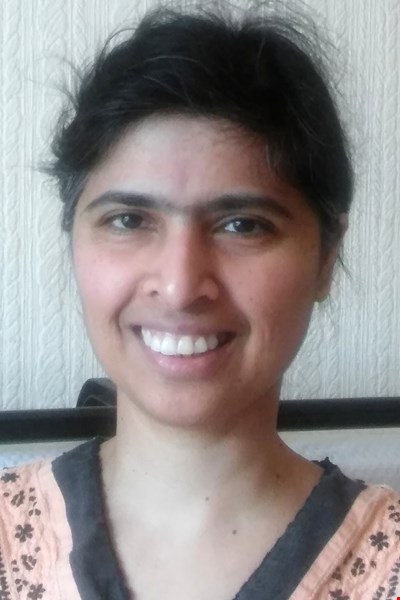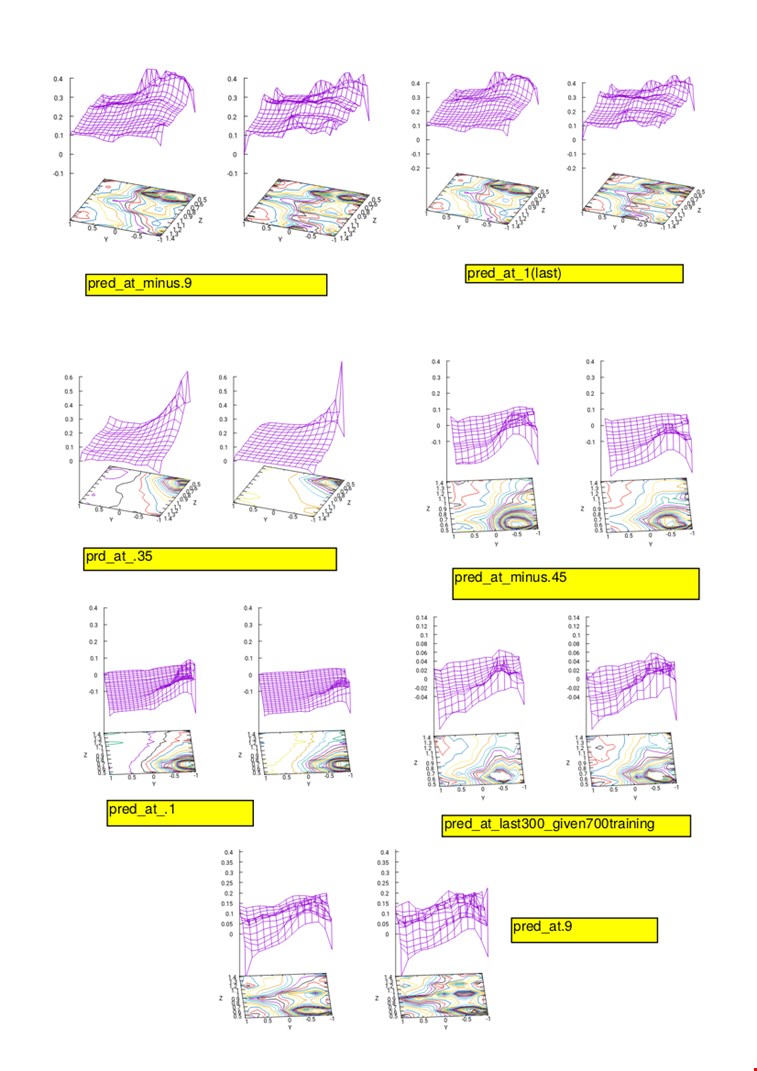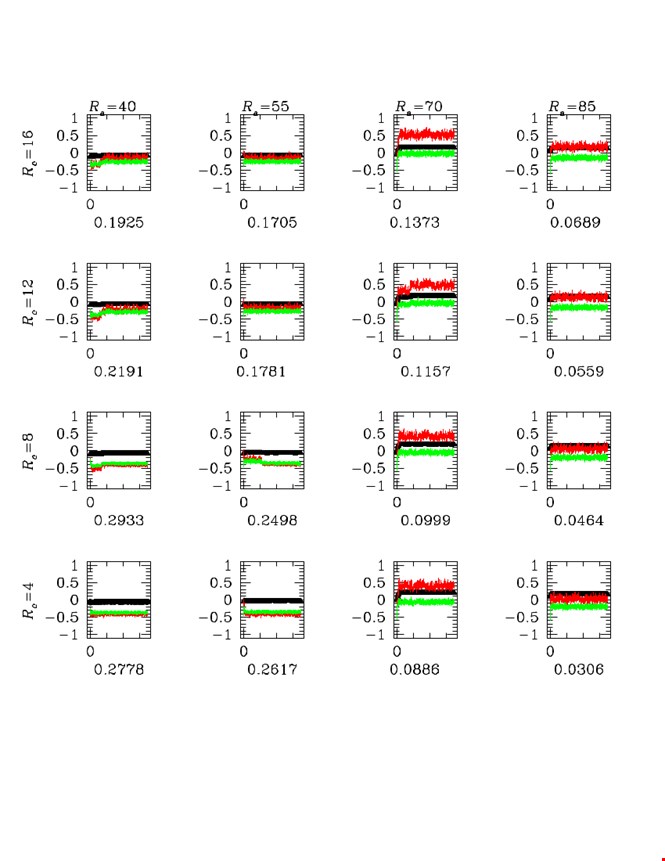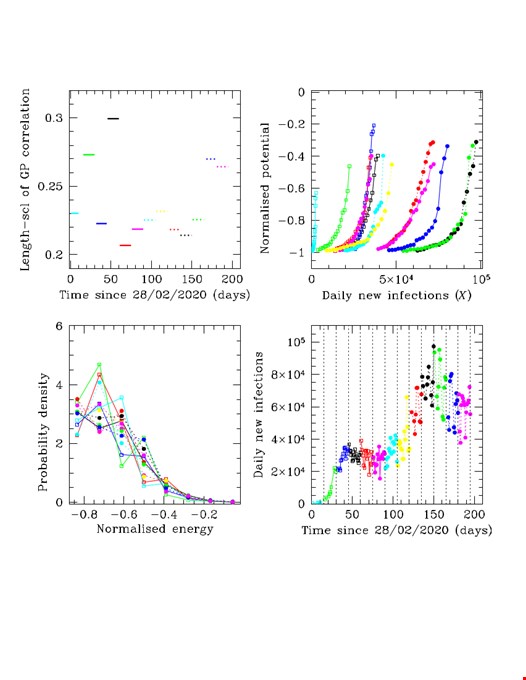
Dr Dalia Chakrabarty
Senior Lecturer in Statistics
Tower A 024
- Email: dalia.chakrabarty@brunel.ac.uk
- Tel: +44 (0)1895 267358
Summary
My D.Phil (from St. Cross College, Oxford) was in Theoretical Astrophysics, and I was examined by Prof. James Binney. My doctoral thesis was dedicated to the development of a novel Bayesian learning method to learn the gravitational mass of the black hole in the centre of the Milky Way, (along with the Galactic phase space density), and to the computational modelling of non-linear dynamical phenomena in galaxies. Thereafter, I continued to develop probabilistic learning methods, and undertake Bayesian inference, within astronomical contexts, till 2009, when I moved to Warwick Statistics, and started developing Bayesian methodologies, to apply to diverse areas. After Warwick, I was a Lecturer in Statistics, in Leicester Maths, and then in Loughborough Maths. I moved to Brunel, Department of Mathematics, at the beginning of 2020. My current interest is strongly focused on the development of Bayesian learning methodologies, given different challenging data situations, such as data that is shaped as a hyper-cuboid; with components that are diversely correlated; absent training data; data that is discontinuously distributed and/or changing with time. I am equally keen on learning graphical models and networks of multivariate datasets, as random geometric graphs, with the ulterior aim of computing distance between a pair of learnt graphs. I am also interested in the development of Bayesian tests of hypotheses that are useful when the alternative model is difficult/impossible to perform computation within, and recently, have initiated a method of optimising the mis-specified parameters of a parametric model, while learning the desired model parameters. My current applications include areas such as healthcare, vino-chemistry, astronomy, test theory, material science, etc.
Qualifications
D.Phil -- University of Oxford (St. Cross College)
M.S. (as part of Itegrated Ph.D programme) -- Indian Institute of Science(Bangalore, India)
B.Sc(Hons) -- St. Xavier's College (under Kolkata University), Kolkata, India
Responsibility
Research:
Current research projects:
(1) Predicting material density at any sub-surface location, following learning of highly discontinuous material density function in the bulk of the material. The training data for this learning was originally absent, but generated using multiple and sequential inversions of images of the material sample - imaged with electron microscopes, at multiple beam energies. The figure below depicts comparison of true density (on the left) at points in test Y-Z slice (at a chosen X value), to the predicted mean density (on the right) in that same slice, for 7 distinct X values. 
(2) Another area of my current research is development of a new method that helps the estimation of values of variables that a parametric model is specified under, while learning the unknown model parameters, given data on the observables. Often, ad hoc values of such specification parameters are invoked, as the available data cannot (readily) inform on the same. For example, structural and/or behavioural symmetries of the model might not be seen to be informed upon, by the data at hand. We advance (MCMC-based) learning of model parameters using the empirical data, and data that is generated using resampling (from the maximum likelihood model given the empirical data), to compute a new divergence measure between posterior densities obtained in the two cases - at chosen specification parameter values. Specification parameters that minimise this divergence, are most compatible with the empirical data at hand. Figure below shows results from a model-driven application to learn the gravitational mass of all (dark and luminous) matter in a real galaxy (NGC 4494), using data on some location+velocity coordinates of an observed sample of galactic particles. Divergence value is given below each panel that depicts results obtained at chosen specification parameter values. We estimate how anisotropic the galactic phase space is best specified as, and how flat the galactic gravitational mass density is best specified to be, while learning the galactic gravitational mass and variance of particle motion, given velocities & locations of observed galactic particles.
(3) I am working on a method that allows for the learning of the evolution-driving function (or potential function) in a non-stationary dynamical system, given time series data on a system parameter, to allow for prediction/forecasting. The potential is embedded within the support of the phase space pdf of this system, to allow for the learning of this pdf and the potential, over local time-windows, during which the system is approximated as stationary. The time-dependent potential of the non-stationary system is then undertaken. The figure below represents results of learning the evolution-driving function over each of 13 distinct time-windows (top right), and the pdf (vector) of the system phase space coordinate (bottom left) that (for the purposes of an empirical illustration) is a defined function of the new COVID-19 infection numbers reported across 8 countries, as taken from the WHO Dashboard. This functional value (the data) is depicted across time in the bottom right, with the 13 time-windows indicated. Length scales of the correlation function of the GP used to model each potential vector learnt in a time-window, are plotted at the given time-window, in the top left. Results and data pertaining to each time-window is colour-coded. Subsequent steps of this illustration are underway. Finally, prediction of COVID-19 daily infections in a chosen country (such as the U.K) will be undertaken to illustrate this method of future prediction.

(4) We have recently been approached by a group of oncologist-haematoligists based in India and the U.K., to predict the disease onset "score" of an ailment that patients of a procedure sometimes develop. We will first learn the disease score for each patient who is observed following the procedure, where we will invoke our inter-graph distance to learn the disease score. We have recently advanced such a distance as an uncertainty-adjusted Hellinger distance, and we learn our graphical model given a rectangular data-slice (such as a patient chart), as a Soft Random Geometric Graph.
I am working towards including some of the above work, in the upcoming book titled "Learning in the Absence of Training Data", Springer.
Responsibilities:
- publication of developed methods and undertaken applications;
- attending conferences: recent most talks were the keyote address at ICSTA, 2019; colloquium at SAMSI (November 2018);
- applying for grants: recent success with application for UK Intelligence Community Fellowship for applicant; Royal Society Dorothy Hodgkin Fellowship holder;
- Ph.D student supervision--currently working with Ph.D student, Georgios Stagakis who started in 2018; my Ph.D student Kangrui Wang finished in 2018 (currently PDRA in the Alan Turing Institute, London), and my other student Cedric Spire finished in 2019 (currently UK IC Fellowhsip that he has bought to Brunel, to work with me as his university-based supervisor.
In addition, I have supervised multiple Masters dissertations in the past; regularly work with final year project students, and while at Loughborough, offered Small Group Tutorials in 1st year UG modules in Analysis, Linear Algebra and Mathematical Methods to my 1st Year personal tutees.
Teaching:
Currently teaching MA3670 (Statistical Modelling) to 3rd year UG students at Brunel Maths.
In Loughborough Maths, I taught: MAB270: Statsitical Modelling; MAB280: Introduction to Stochastic Analysis (second half of module); Fourier Series & Fourier Transforms to 2nd year UGs in Materials Science students.
Earlier in Leicester Maths, I taught Applied Statistics at the UG and PG levels, and contributed to the support teaching of various modules.
Administration:
I am a PGR Director in Brunel Maths.
In Loughborough, I was the Induction Coordinator in Mathematics; tutor to a small group of personal tutees; placement students
Earlier in Leicester Maths, I had been the first Director of the MSc in Data Analysis for Business Intelligence, and was the overall head of the MScs courses in the Department.
